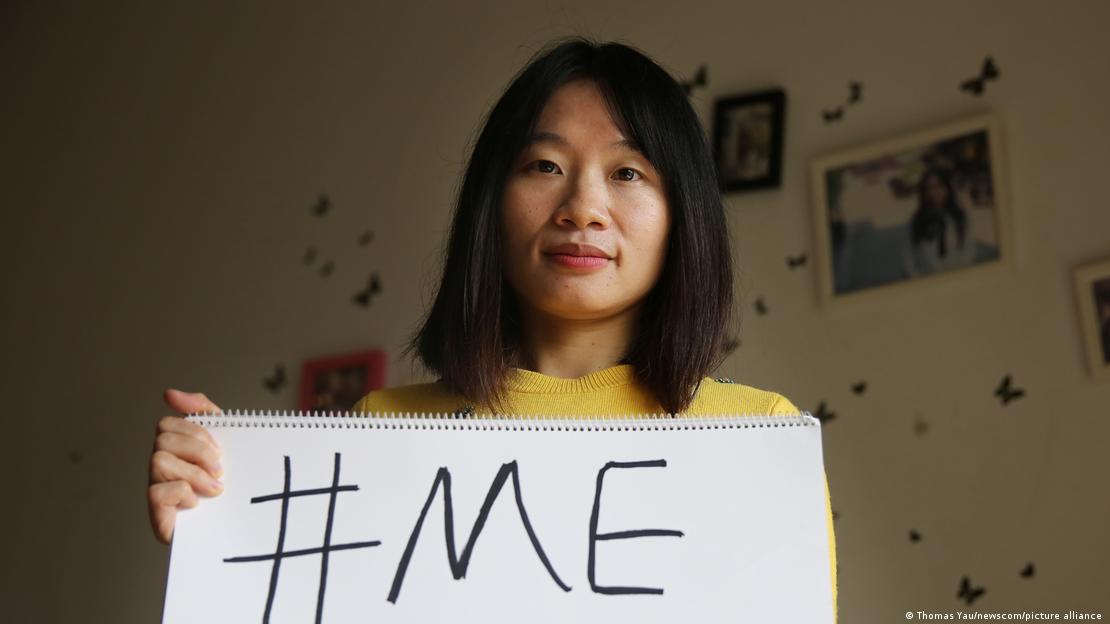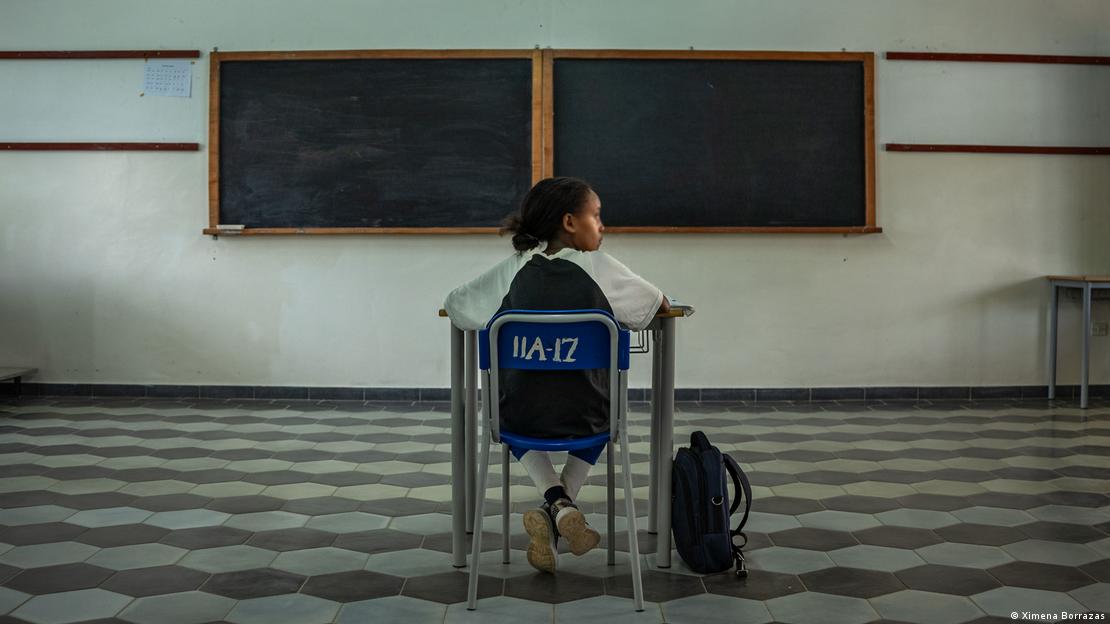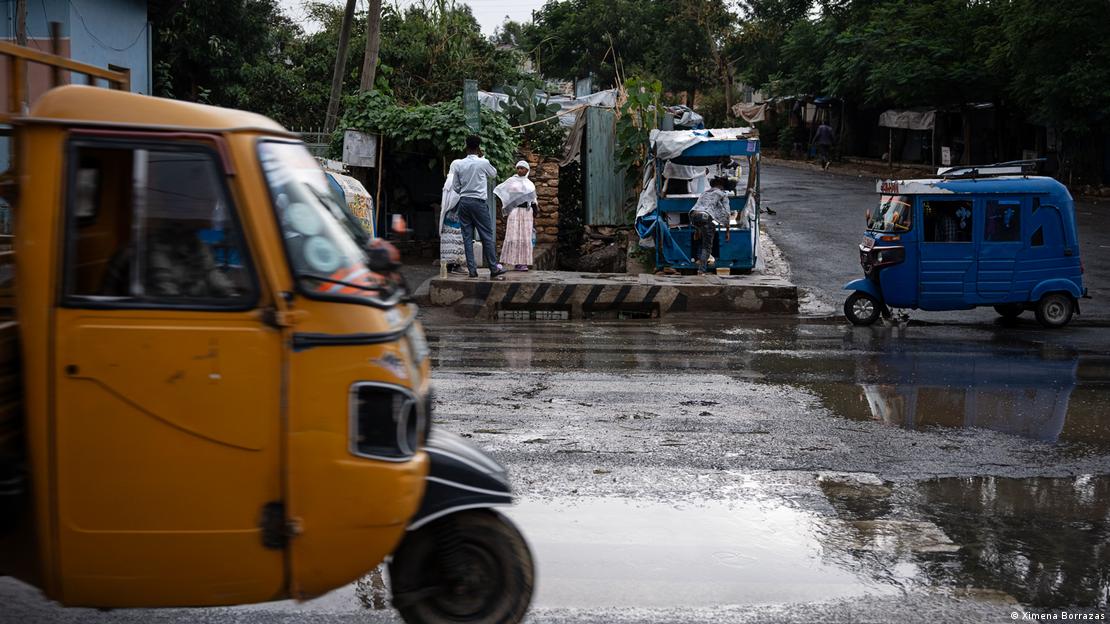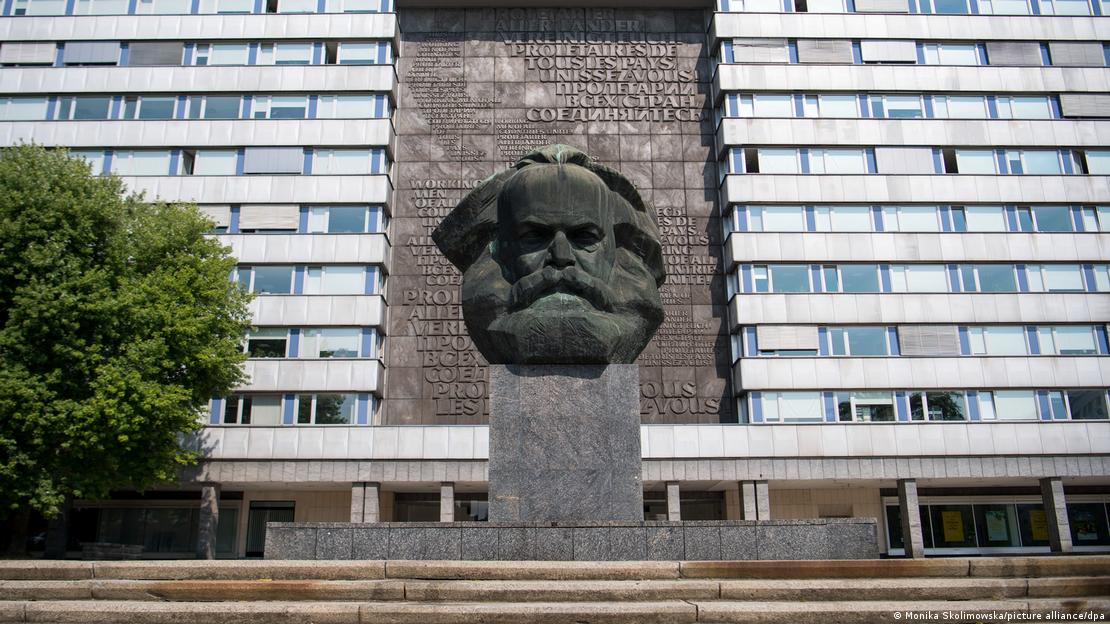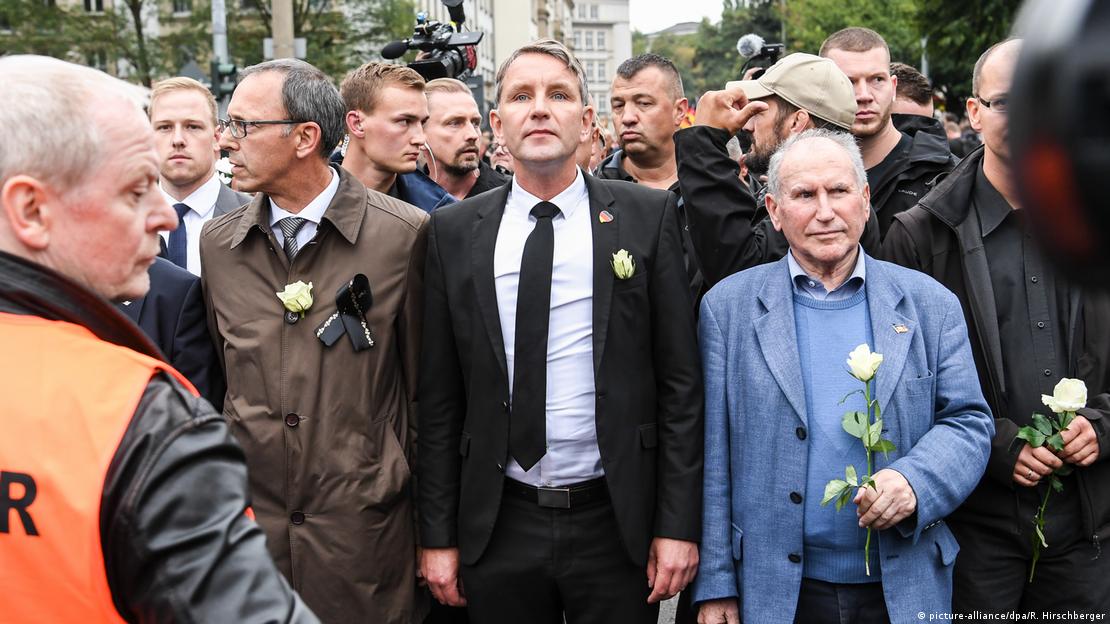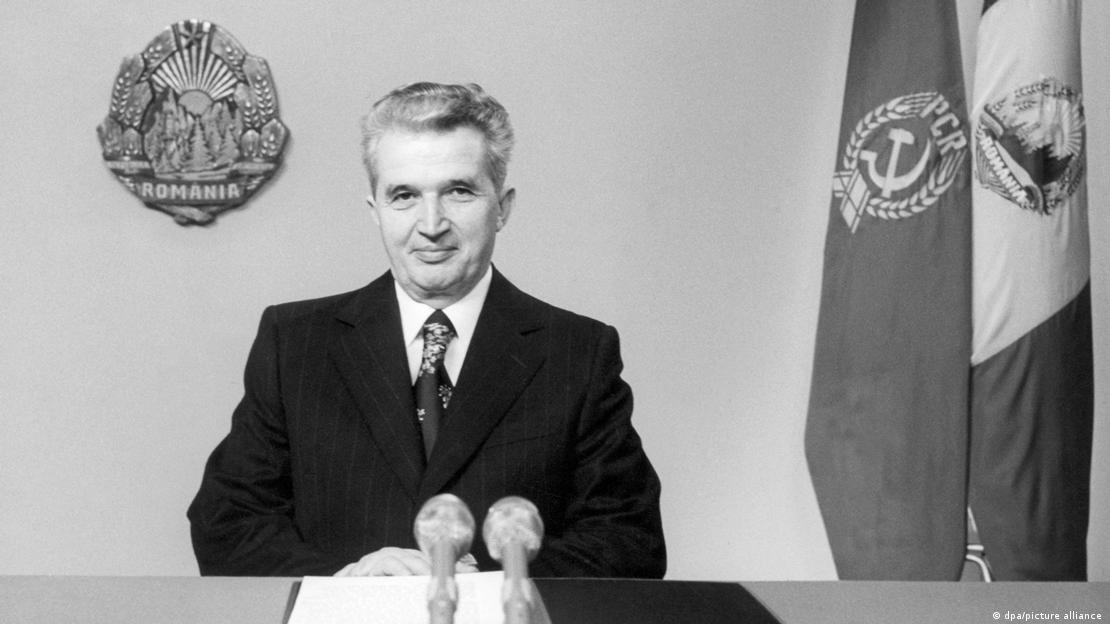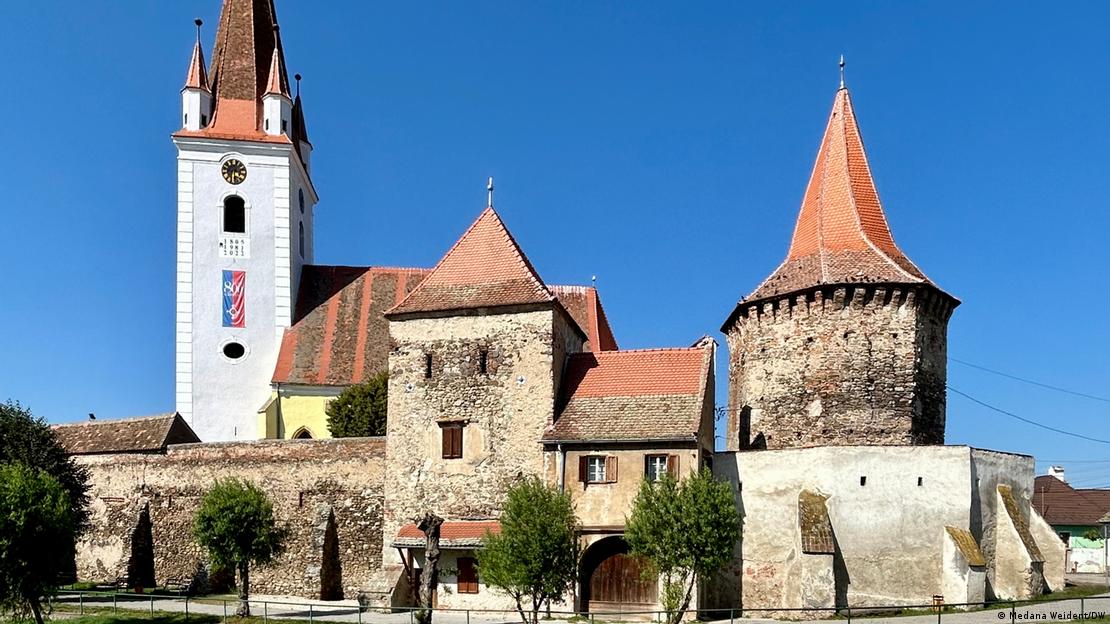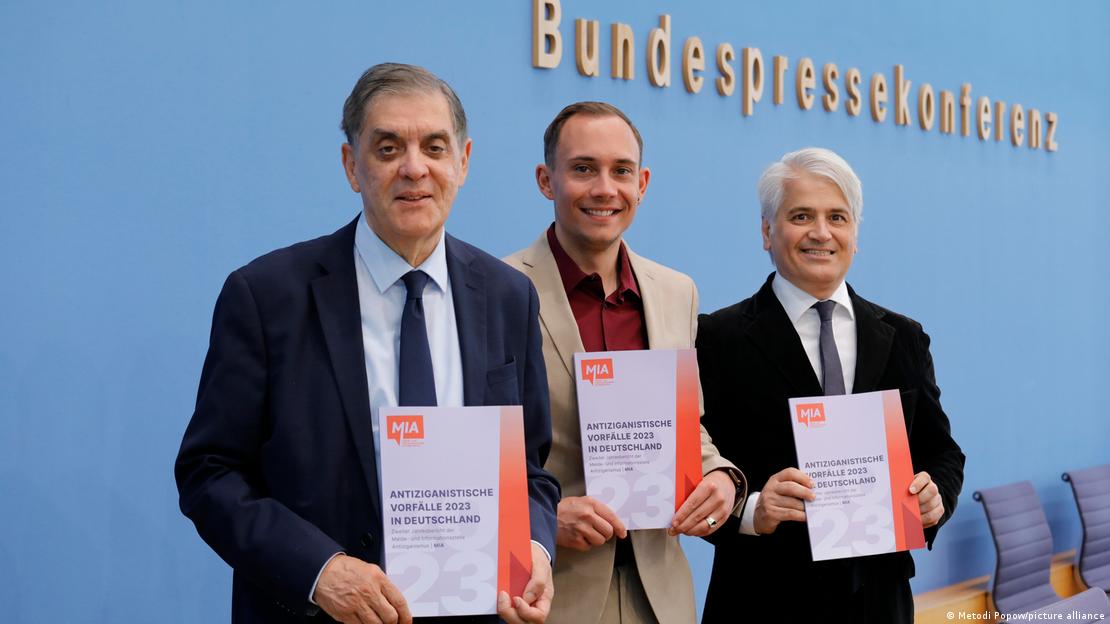SPACE
Gearing up to witness the nova explosion of T Coronae Borealis this September? It promises to be a once-in-a-lifetime astronomical event.
It's not often that a dark spot in space illuminates our planet, but that is exactly what professional and amateur astronomers expect to happen in September when a once-in-a-lifetime nova explosion 3,000 light-years from Earth will light up our night sky.
What is a nova explosion?
A nova explosion is the dramatic instance of a star exploding as it interacts with another, nearby star. It's a one of many, repeated moments during the long, slow, death of two neighboring stars in the same system.
Astronomers are waiting for the fiery explosion of T Coronae Borealis, also dubbed the "Blaze Star" and known to astronomers as "T CrB".
The system contains two stars — a white dwarf and a red giant. The white dwarf is an incredibly dense remnant of a once larger star. It's about the size of planet Earth but with the same mass as our Sun.
Its neighbor, the red giant, is in its final years of existence and is slowly being stripped of hydrogen by the gravitational pull of the denser white dwarf.
This star "cannibalism" causes a tremendous buildup of pressure and heat, which eventually triggers a huge thermonuclear explosion. The explosion doesn't completely destroy the stars, however, and so this event repeats over time. It can carry on for hundreds of thousands of years.
For T CrB, this nova event happens roughly every 80 years — it's a like Halley's Comet event every 76 years — so, astronomers call T CrB a "recurrent" nova.
They believe T CrB's prior eruptions were observed as long ago as December 1787 and even October 1217 AD.
No. A supernova is the final explosion that utterly destroys stars. In a nova event, the dwarf star remains intact, which is why nova events typically repeat themselves.
Different nova events have different cycles, ranging from a few years to hundreds of thousands of years.
What does a nova look like?
The explosion of a nova blasts away star matter in a blinding light, but it won't look like a star explosion you see in the movies — thankfully, we're too far away to see this level of detail.
To the naked eye, the nova will instead look like a new star has appeared in the sky. People with high-powered telescopes will be able to see the nova's brightly colored luminosity in some detail.
Will we be able to see the nova without a telescope?
Yes! When T CrB erupts, its luminosity will increase dramatically, making it visible to the naked eye for several days.
The Northern Crown is a horseshoe-shaped curve of stars west of the Hercules constellation, ideally spotted on clear nights.
To find the Northern Crown, locate the two brightest stars in the Northern Hemisphere: Arcturus and Vega. Tracing a line between the two stars will lead you to the Northern Crown, where T CrB lies.
The European Space Agency told DW that all telescopes were already pointing towards T CrB, waiting to capture the event, but that there are no images as yet.
When will the nova be visible?
All signs point to the nova explosion happening in September 2024. However, novae can be unpredictable, so astrophysicists say it's difficult to know exactly when the T CrB nova will occur.
Have nova events been seen during history?
T CrB nova was last seen from Earth in 1946. The first recorded sighting of the T CrB nova was believed to be more than 800 years ago in 1217, when an abbot in the town of Ursberg, Germany, noted "a faint star that for a time shone with great light."
The abbot wrote the light lasted for "many days” and was thought to be a "wonderful sign." Other celestial events like comets were believed to be bad omens.
Astronomers have recorded supernova events much further back in history. The first sighting of a supernova goes back almost 2000 years to 185 CE, when Chinese astronomers saw a strange "guest star" appear in the night sky for eight months.
Edited by: Zulfikar Abbany
Sources:
NASA Astrophysics https://science.nasa.gov/astrophysics
NASA, Global Astronomers Await Rare Nova Explosion, June 2024 https://www.nasa.gov/centers-and-facilities/marshall/nasa-global-astronomers-await-rare-nova-explosion/
The recurrent nova T CrB had prior eruptions observed near December 1787 and October 1217 AD. Journal for the History of Astronomy, November 2023 https://doi.org/10.1177/00218286231200492

Fred Schwaller Science writer fascinated by the brain and the mind, and how science influences society@schwallerfred
Satellites to monitor marine debris from space
This is what emerges from a study led by the ICM-CSIC recently published in the prestigious journal Nature Communications
SPANISH NATIONAL RESEARCH COUNCIL (CSIC)
IMAGE:
MAP OF THE MEDITERRANEAN SEA SHOWING THE LOCATIONS OF MARINE DEBRIS ACCUMULATIONS DETECTED THANKS TO THE EUROPEAN SATELLITE COPERNICUS SENTINEL-2. EACH RED CIRCLE REPRESENTS AN ACCUMULATION DETECTED DURING THE OBSERVATION PERIOD FROM JUNE 2015 TO SEPTEMBER 2021. THE BLUE ZONES ON LAND CORRESPOND TO THE URBAN AND INDUSTRIAL AREAS OF THE COUNTRIES BORDERING THE MEDITERRANEAN SEA.
view moreCREDIT: MANUEL ARIAS / ANDRÉS CÓZAR
Detecting marine debris from space is now a reality, according to a new study led by the Institut de Ciències del Mar (ICM-CSIC) and the University of Cadiz recently published in the prestigious journal Nature Communications. Until now, the amount of litter -mostly plastic- on the sea surface was rarely high enough to generate a detectable signal from space. However, using supercomputers and advanced search algorithms, the research team has demonstrated that satellites are an effective tool for estimating the amount of litter in the sea.
To carry out the work, funded by the European Space Agency (ESA), a six-year historical series of observations from the European Copernicus Sentinel-2 satellite in the Mediterranean Sea were analysed. In total, 300,000 images taken every 3 days at a resolution of 10 metres were scrutinised. The results reveal large aggregations of litter within floating structures scientifically known as ‘windrows’ that can be up to several kilometres long and result from the convergence of ocean currents and the effect of wind on the sea surface.
Although the satellite's sensors were not specifically designed to detect litter, their ability to identify plastic made it possible to map the most polluted areas in the Mediterranean. This map shows the main entry points for litter from the mainland and improves our understanding of the mechanisms that transport debris. The results indicate that the amount of floating plastic in the Mediterranean could cover an area of approximately 95 square kilometres over the period 2015-2021, which is equivalent to about 7,500 football pitches.
‘Until now, looking for aggregations of litter several metres in diameter on the ocean surface was like looking for needles in a haystack, as the formation of windrows requires the presence of a large amount of litter and little wind to prevent it from spreading,’ explains Manuel Arias (ICM-CSIC), one of the co-directors of the study.
From his side, Andrés Cózar, from the University of Cádiz, also co-director of the study, stresses that ‘the relevance and significance of the trails in terms of marine litter was unknown until now’, and welcomes the fact that automation through supercomputers and advanced search algorithms has made it possible to prove that it is possible to monitor the accumulation of marine litter from space over large areas and on a routine basis".
With an eye to future space missions, the research team suggests installing specific plastic detection sensors on satellites. According to the study, this would increase the ability to detect plastic in the ocean by a factor of 20. In addition, this information could be compared with other environmental factors to improve understanding of the mechanisms that transport plastic debris from land to sea, and better guide actions and regulations to combat this form of marine pollution that affects biodiversity, fish stocks and tourism.
Population density, a key factor
The study concludes that factors such as population density, geography and rainfall patterns have a significant influence on the accumulation of marine litter. For example, desert countries or cities contribute much less to the problem, while in areas with more rainfall, especially when torrential rains occur, the accumulation of litter resulting from emissions in the preceding days and weeks is much higher.
Finally, the study reveals that, in its majority, litter of continental origin is confined to the first 15 kilometres of sea from the coast, returning to the coast after a few days or months. ‘This confirms the notion that the distribution of plastic litter of continental origin and that generated by human activities directly in the sea behave and distribute differently,’ Arias explains.
The authors of the study illustrate the applicability of the new methodology with several real cases, such as the evaluation of the effectiveness of action plans against litter in the Tiber River in Rome (Italy), the identification of pollution hotspots related to maritime transport in the Suez Canal (Egypt) or the use of satellite observations to guide clean-up tasks in the waters of the Bay of Biscay (Spain).
Nevertheless, the study results show that satellite-based monitoring of marine pollution is feasible and promising for issues beyond plastic. For example, a sensor specifically dedicated to the detection and identification of floating objects could help address problems such as loss of cargo on ships, oil spills or search and rescue tasks at sea.
In addition to the University of Cadiz and the ICM-CSIC, the team is made up of researchers from the European Space Agency (ESA), ARGANS France, the Universitat Politècnica de Catalunya (Spain), the Consiglio Nazionale delle Ricerche (ISMAR-CNR, Italy), the Technical University of Crete (Greece), ARGANS Ltd. (UK), AIRBUS Defence and Space (France), the Joint Research Centre (JRC) of the European Commission, The Ocean Cleanup (The Netherlands), and ACRI-ST (France).
JOURNAL
Nature Communications
METHOD OF RESEARCH
Computational simulation/modeling
ARTICLE TITLE
Proof of concept for a new sensor to monitor marine litter from space
ARTICLE PUBLICATION DATE
14-Jun-2024
Cosmic leap: NASA swift satellite and AI unravel the distance of the farthest gamma-ray bursts
THE GRADUATE UNIVERSITY FOR ADVANCED STUDIES, SOKENDAI
IMAGE:
THIS ILLUSTRATION DEPICTS THE PROCESS OF DETECTING GAMMA-RAY BURSTS (GRBS) USING THE SWIFT OBSERVATORY AND ANALYZING THEIR EMISSIONS ON EARTH THROUGH ADVANCED MACHINE-LEARNING TECHNIQUES. THIS CUTTING-EDGE APPROACH ENABLES SCIENTISTS TO DETERMINE THE DISTANCES (REDSHIFT) OF THESE COSMIC PHENOMENA FOR WHICH THE DISTANCE IS UNKNOWN, HELPING UNRAVEL THE MYSTERIES OF THE UNIVERSE.
view moreCREDIT: NASA, ADITYA NARENDRA, MARIA GIOVANNA DAINOTTI, AND AGNIESZKA POLLO
The advent of AI has been hailed by many as a societal game-changer, as it opens a universe of possibilities to improve nearly every aspect of our lives.
Astronomers are now using AI, quite literally, to measure the expansion of our universe.
Two recent studies led by Maria Dainotti, a visiting professor with UNLV’s Nevada Center for Astrophysics and assistant professor at the National Astronomical Observatory of Japan (NAOJ), incorporated multiple machine learning models to add a new level of precision to distance measurements for gamma-ray bursts (GRBs) – the most luminous and violent explosions in the universe.
In just a few seconds, GRBs release the same amount of energy our sun releases in its entire lifetime. Because they are so bright, GRBs can be observed at multiple distances – including at the edge of the visible universe – and aid astronomers in their quest to chase the oldest and most distant stars. But, due to the limits of current technology, only a small percentage of known GRBs have all of the observational characteristics needed to aid astronomers in calculating how far away they occurred.
Dainotti and her teams combined GRB data from NASA’s Neil Gehrels Swift Observatory with multiple machine learning models to overcome the limitations of current observational technology and more precisely estimate the proximity of GRBs for which the distance is unknown. Because GRBs can be observed both far away and at relatively close distances, knowing where they occurred can help scientists understand how stars evolve over time and how many GRBs can occur in a given space and time.
“This research pushes forward the frontier in both gamma-ray astronomy and machine learning,” said Dainotti. “Follow-up research and innovation will help us achieve even more reliable results and enable us to answer some of the most pressing cosmological questions, including the earliest processes of our universe and how it has evolved over time.”
AI Boosts Limits of Deep-Space Observation
In one study, Dainotti and Aditya Narendra, a final-year doctoral student at Poland’s Jagiellonian University, used several machine learning methods to precisely measure the distance of GRBs observed by the space Swift UltraViolet/Optical Telescope (UVOT) and ground-based telescopes, including the Subaru Telescope. The measurements were based solely on other, non distance-related GRB properties. The research was published Feb. 8 on the preprint server arXiv.
“The outcome of this study is so precise that we can determine using predicted distance the number of GRBs in a given volume and time (called the rate), which is very close to the actual observed estimates,” said Narendra.
Another study led by Dainotti and international collaborators has been successful in measuring GRB distance with machine learning using data by NASA’s Swift X-ray Telescope (XRT) afterglows from what are known as long GRBs. GRBs are believed to occur in different ways. Long GRBs happen when a massive star reaches the end of its life and explodes in a spectacular supernova. Another type, known as short GRBs, happen when the remnants of dead stars, such as neutron stars, merge gravitationally and collide with each other.
The novelty of this approach, Dainotti says, comes from using several machine-learning methods together to improve their collective predictive power. This method, called Superlearner, assigns to each algorithm a weight whose values range from 0 to 1, with each weight corresponding to the predictive power of that singular method.
“The advantage of the Superlearner is that the final prediction is always more performant than the singular models,” said Dainotti. “Superlearner is also used to discard the algorithms which are the least predictive.”
This study, which was published Feb. 26 in The Astrophysical Journal, Supplement Series, reliably estimates the distance of 154 long GRBs for which the distance is unknown and significantly boosts the population of known distances among this type of burst.
Answering Puzzling Questions on GRB Formation
A third study, published Feb. 21 in the Astrophysical Journal Letters and led by Stanford University astrophysicist Vahé Petrosian and Dainotti, used Swift X-ray data to answer puzzling questions by showing that the GRB rate – at least at small relative distances – does not follow the rate of star formation.
“This opens the possibility that long GRBs at small distances may be generated not by a collapse of massive stars, but rather by the fusion of very dense objects like neutron stars,” said Petrosian.
With support from NASA’s Swift Observatory Guest Investigator program (Cycle 19), Dainotti and her colleagues are now working to make the machine learning tools publicly available through an interactive web application.
JOURNAL
The Astrophysical Journal Letters
Mysterious mini-Neptunes
NATIONAL INSTITUTES OF NATURAL SCIENCES
IMAGE:
DIAGRAM OF DISCOVERED EXOPLANET ORBITS. THE ORBITS OF EXOPLANETS CLOSE TO THEIR PARENT STARS TEND TO BECOME CIRCULAR OVER TIME, BUT THREE OF THE NEWLY DISCOVERED EXOPLANETS, EXCEPT THE BOTTOM LEFT, HAVE MAINTAINED ELLIPTICAL ORBITS DESPITE BEING OVER A BILLION YEARS OLD.
view moreCREDIT: ASTROBIOLOGY CENTER
This study discovered mini-Neptunes around four red dwarfs using observations from a global network of ground-based telescopes and the TESS space telescope. These four mini-Neptunes are close to their parent stars, and the three of them are likely to be in eccentric orbits.
Planets between the size of Earth and Uranus/Neptune, known as mini-Neptunes, are not found in our Solar System. However, mini-Neptunes are relatively common outside the Solar System and are promising targets for atmospheric characterization by the James Webb Space Telescope. What do mini-Neptunes look like?
This study discovered four transiting short-period mini-Neptunes (TOI-782 b, TOI-1448 b, TOI-2120 b, and TOI-2406 b) orbiting red dwarfs through follow-up observations with ground-based telescopes with MuSCATs (a series of Multicolor Simultaneous Camera for studying Atmospheres of Transiting exoplanets). These mini-Neptunes have radii about 2-3 times that of Earth and orbital periods of less than eight days. In addition, these radial velocity measurements of their parent stars, obtained with the IRD (InfraRed Doppler) on the Subaru telescope, indicate that the upper limit on the masses of these four planets is less than 20 times the mass of Earth. The relationship between the measured radii and the upper mass limits of these mini-Neptunes suggests that they are not rocky planets like Earth. Their interiors likely contain volatiles such as icy materials like H2O and atmospheres.
The team also found that at least three (TOI-782 b, TOI-2120 b, TOI-2406 b) of these four mini-Neptunes are likely to be in eccentric orbits. In general, the orbit of a short-period planet around a red dwarf should be circular due to tidal dissipation. However, three short-period mini-Neptunes around red dwarfs have maintained non-zero eccentricities for billions of years. One possible interpretation of this is that their interiors are not susceptible to tidal effects. The mass-radius relationship of these four mini-Neptunes suggests that they are not rocky planets. Thus, the interiors of these mysterious mini-Neptunes may be similar to those of Neptune. Short-period mini-Neptunes are promising targets for atmospheric observations with the James Webb Space Telescope. Further detailed follow-up observations are expected to improve our understanding of the internal compositions and atmospheres of short-period mini-Neptunes.
JOURNAL
The Astronomical Journal
METHOD OF RESEARCH
Observational study
SUBJECT OF RESEARCH
Not applicable
ARTICLE TITLE
The Discovery and Follow-up of Four Transiting Short-Period Sub-Neptunes Orbiting M dwarfs
High-precision measurements challenge our understanding of Cepheids
ECOLE POLYTECHNIQUE FÉDÉRALE DE LAUSANNE
IMAGE:
RS PUPPIS, ONE OF THE MOST LUMINOUS CEPHEID VARIABLE STARS, RHYTHMICALLY BRIGHTENS AND DIMS OVER A SIX-WEEK CYCLE.
view moreCREDIT: NASA, ESA, HUBBLE HERITAGE TEAM (STSCI/AURA)-HUBBLE/EUROPE COLLABORATION. LINK TO ORIGINAL PHOTO: HTTPS://HUBBLESITE.ORG/CONTENTS/MEDIA/IMAGES/2013/51/3263-IMAGE.HTML
“Classical Cepheids” are a type of pulsating star that rhythmically brightens and dims over time. These pulsations help astronomers measure vast distances across space, which makes Cepheids crucial “standard candles” that help us understand the size and scale of our universe.
Despite their importance, studying Cepheids is challenging. Their pulsations and potential interactions with companion stars create complex patterns that are difficult to measure accurately. Different instruments and methods used over the years have led to inconsistent data, complicating our understanding of these stars.
“Tracing Cepheid pulsations with high-definition velocimetry gives us insights into the structure of these stars and how they evolve,” says Richard I. Anderson, an astrophysicist at EPFL. “In particular, measurements of the speed at which the stars expand and contract along the line of sight – so-called radial velocities – provide a crucial counterpart to precise brightness measurements from space. However, there has been an urgent need for high-quality radial velocities because they are expensive to collect and because few instruments are capable of collecting them.”
The VELOCE Project
Anderson has now led a team of scientists to do exactly that with the VELOcities of CEpheids (VELOCE) project, a large collaboration that, over 12 years, has collected more than 18,000 high-precision measurements of 258 Cepheid radial velocities using advanced spectrographs between 2010 and 2022. “This dataset will serve as an anchor to link Cepheid observations from different telescopes across time and hopefully inspire further study by the community.”
VELOCE is the fruit of a collaboration between EPFL, the University of Geneva, and the KU Leuven. It is based on observations from the Swiss Euler telescope in Chile and the Flemish Mercator telescope on La Palma. Anderson began the VELOCE project during his PhD at the University of Geneva, continued it as a postdoc in the US and Germany, and has now completed it at EPFL. Anderson’s PhD student, Giordano Viviani, was instrumental in making the VELOCE data release possible.
Unraveling Cepheid mysteries with cutting-edge precision
“The wonderful precision and long-term stability of the measurements have enabled interesting new insights into how Cepheids pulsate,” says Viviani. “The pulsations lead to changes in the line-of-sight velocity of up to 70 km/s, or about 250,000 km/h. We have measured these variations with a typical precision of 130 km/h (37 m/s), and in some cases as good as 7 km/h (2 m/s), which is roughly the speed of a fast walking human.”
To get such precise measurements, the VELOCE researchers used two high-resolution spectrographs, which separate and measure wavelengths in electromagnetic radiation: HERMES in the northern hemisphere and CORALIE in the southern hemisphere. Outside of VELOCE, CORALIE is famous for finding exoplanets and HERMES is a workhorse of stellar astrophysics.
The two spectrographs detected tiny shifts in the Cepheids’ light, indicating their movements. The researchers used advanced techniques to ensure their measurements were stable and accurate, correcting for any instrumental drifts and atmospheric changes. “We measure radial velocities using the Doppler effect,” explains Anderson. “That’s the same effect that the police use to measure your speed, and also the effect you know from the change in tone when an ambulance approaches or recedes from you.”
The strange dance of Cepheids
The VELOCE project uncovered several fascinating details about Cepheid stars. For example, VELOCE data provide the most detailed look yet at the Hertzsprung progression – a pattern in the stars’ pulsations – showing double-peaked bumps that were not previously known and will provide clues to better understanding the structure of Cepheids when compared to theoretical models of pulsating stars.
The team found that several Cepheids exhibit complex, modulated variability in their movements. This means that the stars’ radial velocities change in ways that cannot be explained by simple, regular pulsation patterns. In other words, while we would expect Cepheids to pulsate with a predictable rhythm, the VELOCE data reveal additional, unexpected variations in these movements.
These variations are not consistent with theoretical pulsation models traditionally used to describe Cepheids. “This suggests that there are more intricate processes occurring within these stars, such as interactions between different layers of the star, or additional (non-radial) pulsation signals that may present an opportunity to determine the structure of Cepheid stars by asteroseismology,” says Anderson’s postdoc Henryka Netzel. First detections of such signals based on VELOCE are reported in a companion paper (Netzel et al. in press).
Binary systems
The study also identified 77 Cepheid stars that are part of binary systems (two stars orbiting each other) and found 14 more candidates. A companion paper led by Anderson’s former postdoc, Shreeya Shetye, describes these systems in detail, adding to our understanding of how these stars evolve and interact with each other. “We see that about one in three Cepheids has an unseen companion whose presence we can determine by the Doppler effect,” says Shetye.
“Understanding the nature and physics of Cepheids is important because they tell us about how stars evolve in general, and because we rely on them for determining distances and the expansion rate of the Universe,” says Anderson. “Additionally, VELOCE provides the best available cross-checks for similar, but less precise, measurements from the ESA mission Gaia, which will eventually conduct the largest survey of Cepheid radial velocity measurements.”
Other contributors
- Ruder Bošković Institute
- Harvard-Smithsonian Center for Astrophysics
- University Hospital of Lausanne (CHUV)
- University of Lausanne (UNIL)
- Max Planck Institute for extraterrestrial Physics
- Lund University
- Eberhard Karls University
- Université de Liège
- European Southern Observatory
- Tufts University
- Stanford University
- Universidade do Porto
Reference
Richard I. Anderson, Giordano Viviani, Shreeya S. Shetye, Nami Mowlavi, Laurent Eyer, Lovro Palaversa, Berry Holl, Sergi Blanco-Cuaresma, Kateryna Kravchenko, Michał Pawlak, Mauricio Cruz Reyes, Saniya Khan, Henryka E. Netzel, Lisa Löbling, Péter I. Pápics, Andreas Postel, Maroussia Roelens, Zoi T. Spetsieri, Anne Thoul, Jiří Zák, Vivien Bonvin, David V. Martin, Martin Millon, Sophie Saesen, Aurélien Wyttenbach, Pedro Figueira, Maxime Marmier, Saskia Prins, Gert Raskin, Hans van Winckel. VELOcities of CEpheids (VELOCE) I. High-precision radial velocities of Cepheids. Astronomy & Astrophysics 14 June 2024. DOI: 10.1051/0004-6361/202348400
VELOCE observations trace the expansion and contraction of Cepheid stars with unprecedented precision.
VELOCE observations trace the expansion and contraction of Cepheid stars with unprecedented precision. On the left: observed spectra of the Cepheid archetype Delta Cephei as they change in wavelength due to the pulsations. On the right: the radial velocity curve measured by VELOCE, with the star's variable size shown (not to scale) using star-shaped symbols.
CREDIT
R.I. Anderson (EPFL)
JOURNAL
Astronomy and Astrophysics
ARTICLE TITLE
High-precision radial velocities of Cepheids.
ARTICLE PUBLICATION DATE
14-Jun-2024
LIST launches pioneering nanosatellite experiment to demonstrate energy harvesting innovation in space
The mission entails sending technologies developed at LIST into space for testing with an aim to achieve flight heritage
IMAGE:
REPRESENTATION OF THE NANOSATELLITE
view moreCREDIT: LIST
The Luxembourg Institute of Science and Technology (LIST) announces the launch of its CubeSat project LIST-SAT-01, the first Luxembourgish nanosatellite initiative with a scientific experiment on-board made in house, aimed at showcasing the institute's technology innovation in the space environment. Under the mission of testing and advancing technologies developed at LIST, the CubeSat project seeks to increase their Technology Readiness Level (TRL) and achieve flight heritage of on-board technologies.
Harvesting energy in space
At the core of the CubeSat project is a technological demonstrator, a nanosatellite weighing 1.2 kilograms, which will include a payload made of a thermal energy harvester integrating pyroelectric materials developed within LIST. This LIST technology has recently received the prestigious European Research Council (ERC) Advanced Grant, which is awarded to Europe’s top researchers in a highly competitive process. “The scientific goals of the CubeSat project revolve around demonstrating the technology of an energy harvesting system,” said Olivier Bouton, project manager. “The satellite will harvest energy from temperature cycles induced by its orbit.” As the satellite orbits the Earth, its orientation will vary —sometimes facing the sun, receiving solar radiant heat, and at other times obscured during an eclipse, allowing it to cool down. Consequently, it will experience fluctuating temperatures along its trajectory, resulting in a temperature profile with maximum and minimum values. “We will leverage this temperature modulation to harvest energy,” he added.
The CubeSat will house three distinct technologies developed by LIST:
- Pyroelectric Energy Harvester: A system that produces electrical power from heat modulation in space.
- Super Black coating: A perfect blackbody designed to efficiently absorb and emit thermal radiation.
- Inkjet Printed Sensors: Thermal gauges printed on parts of the spacecraft to monitor the payload experiment in the space environment.
Essentially, the project aims to demonstrate the system's performance in space of these three LIST technologies operating together for the same energy harvesting system. The black body, designed to absorb solar radiation efficiently, heats up during exposure to the sun and emits that heat during eclipse periods, enhancing overall energy capture. This energy harvesting system aims to benchmark the possibility of complementing traditional photovoltaic panels with a more efficient alternative, while also mitigating the sensitivity to both radiation-induced degradation (Total Non-Ionising Dose) and ballistic impact of orbiting debris in space.
A solid research collaboration
The CubeSat project is a result of a research collaboration between four partners. LIST as coordinator and CSUM (University Space Center Montpellier, France) being the main contributors. The project will also engage with the Radio amateur clubs F8KGY ARRT (Thionville, France) and ADRAD Kayldall LX9AK (Rumelange, Luxembourg) for radiocommunication between the CubeSat and the ground station.
CSUM has recognized expertise in design, development, testing and operation of nanosatellites, as well as in project management and product assurance dedicated to university space projects. The satellite will be based on their existing space-qualified platform.
The launch of the CubeSat in space is scheduled for January 2026, following the project's initiation in September 2023. The timeline includes the definition and specification of the system in 2023-2024, system production and debugging in 2024-2025, qualification tests in late 2025, and the mission's operation in space after launching in early 2026, lasting at least one year.
"This project brings together complementary expertise and skills of different teams within the department of Materials (MRT) of LIST,” said Jérôme Polesel, Technology and Innovation Manager at LIST and scientific coordinator of the project. "It is the first time that such energy harvesting technology will be implemented in a satellite, aiming to synergize our different know-hows. This flagship project is truly a big source of motivation for our technical staff.” The CubeSat project also aims to create opportunities for further development of payload technology and pave the way for future demonstration missions of other LIST technologies. “As one of the first scientific Luxembourgish nanosatellites, the initiative aligns perfectly with the materials department’s strategic initiative's "Flagship demos" objective, which focuses on highly ambitious real-scale demonstrations of advanced end-products,” added Jérôme Polesel.
LIST team with partners
CREDIT
LIST
International Gemini Observatory and Subaru combine forces to discover first ever pair of merging quasars at cosmic dawn
Observations with the Gemini North telescope aid in the discovery of the most distant pair of merging quasars, seen only 900 million years after the Big Bang
IMAGE:
THIS ILLUSTRATION DEPICTS TWO QUASARS IN THE PROCESS OF MERGING. USING BOTH THE Gemini North telescope, ONE HALF OF THE International Gemini Observatory, WHICH IS SUPPORTED IN PART BY THE U.S. NATIONAL SCIENCE FOUNDATION AND OPERATED BY NSF NOIRLAB, AND THE Subaru Telescope, A TEAM OF ASTRONOMERS HAVE DISCOVERED A PAIR OF MERGING QUASARS SEEN ONLY 900 MILLION YEARS AFTER THE BIG BANG. NOT ONLY IS THIS THE MOST DISTANT PAIR OF MERGING QUASARS EVER FOUND, BUT ALSO THE FIRST CONFIRMED PAIR FOUND IN THE PERIOD OF THE UNIVERSE KNOWN AS COSMIC DAWN.
view moreCREDIT: INTERNATIONAL GEMINI OBSERVATORY/NOIRLAB/NSF/AURA/M. GARLICK
Since the very first instant after the Big Bang the Universe has been expanding. This means that the early Universe was considerably smaller and early-formed galaxies were more likely to interact and merge. Galaxy mergers fuel the formation of quasars — extremely luminous galactic cores where gas and dust falling into a central supermassive black hole emit enormous amounts of light. So when looking back at the early Universe astronomers would expect to find numerous pairs of quasars in close proximity to each other as their host galaxies undergo mergers. However, they have been surprised to find exactly none — until now.
With the aid of the Gemini North telescope, one half of the International Gemini Observatory, which is supported in part by the U.S. National Science Foundation and operated by NSF NOIRLab, a team of astronomers have discovered a pair of merging quasars seen only 900 million years after the Big Bang. Not only is this the most distant pair of merging quasars ever found, but also the first confirmed pair in the period of the Universe’s history known as Cosmic Dawn.
Cosmic Dawn spanned from about 50 million years to one billion years after the Big Bang. During this period the first stars and galaxies began appearing, filling the dark Universe with light for the first time. The arrival of the first stars and galaxies kicked off a new era in the formation of the cosmos known as the Epoch of Reionization.
The Epoch of Reionization, which took place within Cosmic Dawn, was a period of cosmological transition. Beginning roughly 400 million years after the Big Bang, ultraviolet light from the first stars, galaxies and quasars spread throughout the cosmos, interacting with the intergalactic medium and stripping the Universe’s primordial hydrogen atoms of their electrons in a process known as ionization. The Epoch of Reionization was a critical epoch in the history of the Universe that marked the end of the cosmic dark ages and seeded the large structures we observe in our local Universe today.
To understand the exact role that quasars played during the Epoch of Reionization, astronomers are interested in finding and studying quasars populating this early and distant era. “The statistical properties of quasars in the Epoch of Reionization tell us many things, such as the progress and origin of the reionization, the formation of supermassive black holes during Cosmic Dawn, and the earliest evolution of the quasar host galaxies,” said Yoshiki Matsuoka, an astronomer at Ehime University in Japan and lead author of the paper describing these results, published in the Astrophysical Journal Letters.
About 300 quasars have been discovered in the Epoch of Reionization, but none of them have been found in a pair. That is until Matsuoka and their team were reviewing images taken with the Hyper Suprime-Cam on the Subaru Telescope and a faint patch of red caught their eye. “While screening images of quasar candidates I noticed two similarly and extremely red sources next to each other,” said Matsuoka. “The discovery was purely serendipitous.”
The team was not sure that they were a quasar pair since distant quasar candidates are contaminated by numerous other sources, such as foreground stars and galaxies and the effects of gravitational lensing. To confirm the nature of these objects the team conducted follow-up spectroscopy using the Faint Object Camera and Spectrograph (FOCAS) on the Subaru Telescope and the Gemini Near-Infrared Spectrograph (GNIRS) on Gemini North. The spectra, which break down the emitted light from a source into its component wavelengths, obtained with GNIRS were crucial to characterizing the nature of the quasar pair and their host galaxies.
“What we learned from the GNIRS observations was that the quasars are too faint to detect in near-infrared, even with one of the largest telescopes on the ground,” said Matsuoka. This allowed the team to estimate that a portion of the light detected in the optical wavelength range is not coming from the quasars themselves, but from ongoing star formation taking place in their host galaxies. The team also found that the two black holes are whoppers, each being 100 million times the mass of the Sun. This, coupled with the presence of a bridge of gas stretching between the two quasars, suggests that they and their host galaxies are undergoing a major-scale merger [1].
“The existence of merging quasars in the Epoch of Reionization has been anticipated for a long time. It has now been confirmed for the first time,” said Matsuoka [2].
The Epoch of Reionization connects the earliest formation of cosmic structure to the complex Universe that we observe billions of years later. By studying distant objects from this period astronomers gain valuable insight into the process of reionization and the formation of the first objects in the Universe. More discoveries like this may be on the horizon with NSF–DOE Vera C. Rubin Observatory’s decade-long Legacy Survey of Space and Time (LSST), beginning in 2025, which is poised to detect millions of quasars using its deep imaging capabilities.
This image, taken with the Hyper Suprime-Cam on the Subaru Telescope, shows a pair of quasars in the process of merging. The faint patches of red caught the eye of astronomers and follow-up spectroscopy with the Gemini North telescope, one half of the International Gemini Observatory, which is supported in part by the U.S. National Science Foundation and operated by NSF NOIRLab, confirmed that these objects are quasars. The pair is seen only 900 million years after the Big Bang. Not only is this the most distant pair of merging quasars ever found, but also the first confirmed pair in the period of the Universe’s history known as Cosmic Dawn.
CREDIT
NOIRLab/NSF/AURA/T.A. Rector (University of Alaska Anchorage/NSF NOIRLab), D. de Martin (NSF NOIRLab) & M. Zamani (NSF NOIRLab)
With the help of the powerful GNIRS instrument on the Gemini North telescope, one half of the International Gemini Observatory, supported in part by the U.S. National Science Foundation and operated by NSF NOIRLab, a team of astronomers have discovered a double-record-breaking pair of quasars. Not only are they the most distant pair of merging quasars ever found, but also the only pair confirmed in the bygone era of the Universe’s earliest formation.
CREDIT
Images and Videos: International Gemini Observatory/NOIRLab/NSF/AURA/M. Garlick/P. Horálek (Institute of Physics in Opava)/T.A. Rector (University of Alaska Anchorage/NSF NOIRLab)/D. de Martin (NSF NOIRLab)/M. Zamani (NSF NOIRLab)/ESA/Hubble/NASA/M. Kornmesser/N. Bartmann (NSF NOIRLab) Music: Stellardrone - In Time
Notes
[1] A companion paper accepted for publication in AAS Journals presents further analysis of the quasar pair, the gas bridge between them and their host galaxies using observations taken with the Atacama Large Millimeter/submillimeter Array (ALMA).
[2] There have been candidates, but it is difficult to separate them from possibly gravitationally-lensed images of a single quasar. There are also some candidates for being dual active galactic nuclei embedded in individual Epoch of Reionization galaxies, but these have much lower luminosity (black hole activity) than quasars and are two components within a single galaxy, which are qualitatively different from what is described here.
More information
This research was presented in a paper entitled “Discovery of Merging Twin Quasars at z = 6.05” to appear in the Astrophysical Journal Letters. DOI: 10.3847/2041-8213/ad35c7
The team is composed of Yoshiki Matsuoka (Ehime University, Japan), Takuma Izumi (National Astronomical Observatory of Japan, Tokyo), Masafusa Onoue (Kavli Institute for the Physics and Mathematics of the Universe, Japan), Michael A. Strauss (Princeton University, USA), Kazushi Iwasawa (Universitat de Barcelona Spain), Nobunari Kashikawa (University of Tokyo, Japan), Masayuki Akiyama (Tohoku University, Japan), Kentaro Aoki (Subaru Telescope, National Astronomical Observatory of Japan, USA), Junya Arita (University of Tokyo, Japan), Masatoshi Imanishi (National Astronomical Observatory of Japan, Graduate University for Advanced Studies [SOKENDAI], Japan), Rikako Ishimoto (University of Tokyo, Japan), Toshihiro Kawaguchi (Onomichi City University, Japan), Kotaro Kohno (University of Tokyo, Japan), Chien-Hsiu Lee (W. M. Keck Observatory, USA), Tohru Nagao (Ehime University, Japan), John D. Silverman (Kavli Institute for the Physics and Mathematics of the Universe, Japan), and Yoshiki Toba (Ehime University, Japan, National Astronomical Observatory of Japan, Tokyo, Academia Sinica Institute of Astronomy and Astrophysics, Taiwan)
NSF NOIRLab (U.S. National Science Foundation National Optical-Infrared Astronomy Research Laboratory), the U.S. center for ground-based optical-infrared astronomy, operates the International Gemini Observatory (a facility of NSF, NRC–Canada, ANID–Chile, MCTIC–Brazil, MINCyT–Argentina, and KASI–Republic of Korea), Kitt Peak National Observatory (KPNO), Cerro Tololo Inter-American Observatory (CTIO), the Community Science and Data Center (CSDC), and Vera C. Rubin Observatory (operated in cooperation with the Department of Energy’s SLAC National Accelerator Laboratory). It is managed by the Association of Universities for Research in Astronomy (AURA) under a cooperative agreement with NSF and is headquartered in Tucson, Arizona. The astronomical community is honored to have the opportunity to conduct astronomical research on I’oligam Du’ag (Kitt Peak) in Arizona, on Maunakea in Hawai‘i, and on Cerro Tololo and Cerro Pachón in Chile. We recognize and acknowledge the very significant cultural role and reverence that these sites have to the Tohono O’odham Nation, to the Native Hawaiian community, and to the local communities in Chile, respectively.
JOURNAL
The Astrophysical Journal Letters
DOI
Scientists develop 3D printed vacuum system that aims to trap dark matter
Peer-Reviewed PublicationIMAGE:
LASER PHOTON SYSTEM IN THE LAB AT THE UNIVERSITY OF NOTTINGHAM
view moreCREDIT: UNIVERSITY OF NOTTINGHAM
Using a specially designed 3D printed vacuum system, scientists have developed a way to ‘trap’ dark matter with the aim of detecting domain walls, this will be a significant step forwards in unravelling some of the mysteries of the universe.
Scientists from the University of Nottingham’s’ School of Physics have created a 3D printed vacuum system that they will use in a new experiment to reduce the density of gas, then and add in ultra-cold lithium atoms to try to detect dark walls. The research has been published in Physical Review D.
Professor Clare Burrage from the School of Physics is one of the lead authors on the study and explains: “Ordinary matter that the world is made from is only a tiny fraction of the contents of the universe, around 5%, the rest is either dark matter or dark energy – we can see their effects on how the universe behaves but we don’t know what they are. One way people try to measure dark matter is to introduce a particle called a scalar field.
“Dark matter is the missing mass in galaxies, dark energy can explain the acceleration of the expansion of the universe. The scalar fields that we are looking for could be either dark matter, or dark energy. By introducing the ultra-cold atoms and examining the effects it produces we may be able to explain why the expansion of the universe is accelerating and whether this has any effects on earth.”
The researchers based the construction of the 3D vessels on the theory that light scalar fields, with double well potentials and direct matter couplings, undergo density driven phase transitions, leading to the formation of domain walls.
Professor Burrage continues: “As density is lowered defects form - this is similar to when water freezes into ice, water molecules are random and when they freeze you get a crystal structure with molecules lined up at random, with some lined up one way and some another and this creates fault lines. Something similar happens in scalar fields as the density gets lower. You can’t see these fault lines by eye but if particles pass across them it might change their trajectory These defects are dark walls and can prove the theory of scalar fields – either that these fields exist or don’t.”
To detect these defects or dark walls the team have created a specially designed vacuum that they will use in a new experiment that will mimic moving from a dense environment to less dense environment. Using the new set-up they will cool lithium atoms with laser photons to -273 which is close to absolute zero, at this temperature they take on quantum properties which makes analysis more precise and predictable.
Lucia Hackermueller, Associate Professor in the School of Physics has led the design of the laboratory experiment, she explains, “The 3D printed vessels we are using as the vacuum chamber have been constructed using theoretical calculations of Dark Walls, this has created what we believed to be the ideal shape, structure and texture to trap the dark matter. To successfully demonstrate that dark walls have been trapped, we will let a cold atom cloud pass through those walls. The cloud is then deflected. To cool those atoms we fire laser photons at the atoms, which reduces the energy in the atom - this is like slowing down an elephant using snowballs!”
The system took the team three years to build and they expect to have results within a year.
Dr Hackermueller adds: “Whether we prove dark walls exist or not it will be an important step forwards in our understanding of dark energy and dark matter, and an excellent example of how a well controlled lab experiment can be designed to directly measure effects that are relevant for the Universe and otherwise cannot be observed.”
JOURNAL
Physical Review D
METHOD OF RESEARCH
Experimental study
SUBJECT OF RESEARCH
Not applicable
ARTICLE TITLE
Detecting dark domain walls through their impact on particle trajectories in tailored ultrahigh vacuum environments
ARTICLE PUBLICATION DATE
14-Jun-2024



